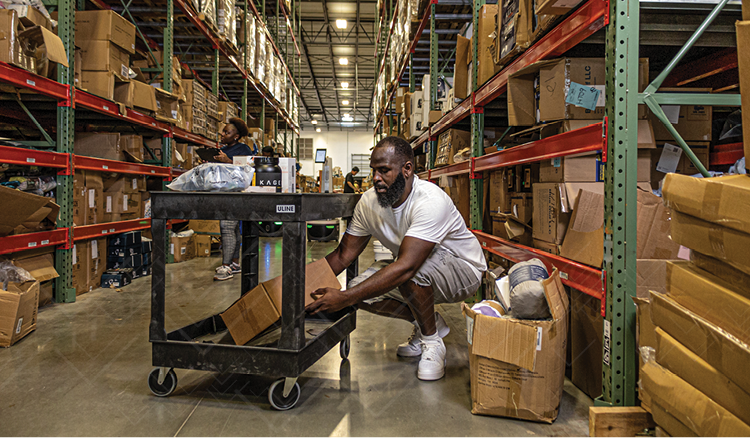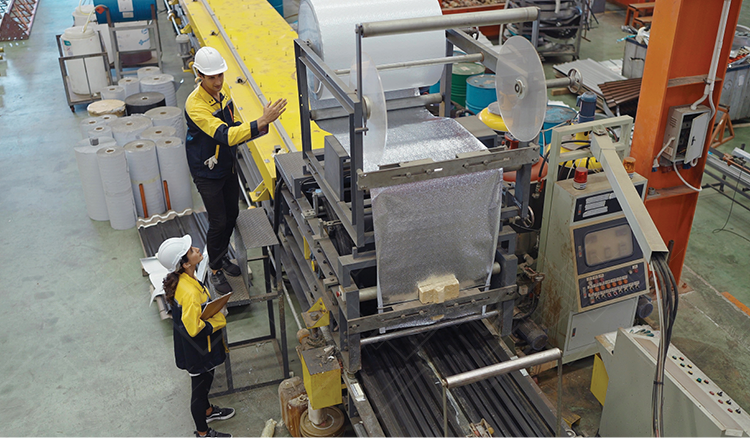Asset Light : How "As-a-Service" Unlocks Growth & Eliminates Waste
In business, costs that were once viewed as fixed—rent, equipment, subscriptions—are no longer the immovable constants they used to be. Many companies have already begun to shift, either by choice or necessity, as providers increasingly offer services on a pay-per-use basis. This isn’t just a trend; it’s a transformation in how businesses operate, focusing on aligning costs directly with value creation.
From cloud computing to subscription-based equipment, companies are being nudged into adopting asset-light strategies. This isn’t about owning less; it’s about using resources smarter. It’s about eliminating waste and ensuring that every dollar spent contributes to growth, agility, and profitability.
The name of the game is alignment. The closer your costs are tied to your output, the easier it becomes to adapt, pivot, and scale. Nowhere is this shift more transformative than in labor. Veryable enables businesses to treat labor not as an unyielding overhead but as a flexible, dynamic resource. In doing so, they’ve turned a fixed cost into a variable one, unleashing efficiencies that were previously out of reach.
This isn’t a new idea—it’s the natural evolution of how businesses are already moving. The real question isn’t whether to embrace the asset-light model, but how far it can take you.
Examples of Businesses Paying for What They Use
The shift from fixed to variable cost models is pervasive. Businesses across industries are embracing usage-based payments to increase efficiency. Here are just a few examples:
- Software-as-a-Service (SaaS): Businesses subscribe to platforms like Salesforce, paying for features and users as needed.
- Equipment-as-a-Service (EaaS): Manufacturers pay for machinery based on hours of operation or units produced.
- Infrastructure-as-a-Service (IaaS): Companies rent cloud computing resources from providers like AWS, paying per gigabyte of data stored or processed.
- Logistics-as-a-Service (LaaS): Warehousing and transportation are now often handled by third-party logistics providers (3PLs), billed per shipment or square foot of storage. -
- Utilities-as-a-Service: Energy-efficient systems like smart lighting or HVAC are paid for based on usage.
- Transportation-as-a-Service: Businesses rely on services like Uber for Business or truck fleets billed per mile driven.
- Marketing-as-a-Service: Ad platforms charge per impression or click, aligning costs with campaign performance.
- Telecommunications-as-a-Service: Companies pay for data usage, voice minutes, or bandwidth as consumed.
- Printing-as-a-Service: The pay-per-page model pioneered by copier companies continues to save costs.
- Security-as-a-Service: Access control and surveillance systems are now subscription-based, charged by the month or usage tier.
Aligning Labor Costs to Output: The Power of On-Demand Labor
Labor, traditionally seen as a fixed cost, has long been a stumbling block for businesses seeking efficiency. Payroll expenses remain constant even when production slows, and traditional temp staffing solutions often fail to align labor precisely with operational needs. Veryable changes this dynamic by making labor costs variable and directly tied to output.
With on-demand labor, businesses only pay for the work performed. Operators are brought in as needed, whether for a few hours or a few days, ensuring that costs rise and fall with production levels. This alignment transforms labor into a tool of efficiency, eliminating waste and unlocking new opportunities for growth.
A manufacturing plant ramping up production for a large order can quickly access skilled workers for assembly, inspection, and shipping. When the order is completed, labor costs decrease immediately, freeing the business from the burden of carrying unnecessary payroll. Logistics operations facing seasonal demand spikes can scale their workforce dynamically, maintaining high service levels without overcommitting to permanent staff.
The Operator Mindset: Owning Schedules and Earning Potential
The shift toward on-demand labor isn’t just driven by businesses. Workers themselves are embracing the freedom and opportunities provided by gig work and flexible schedules. The traditional model of full-time employment, once seen as the gold standard, is increasingly viewed as limiting.
A 2022 study by McKinsey highlighted that over 36% of the workforce in the U.S. engages in some form of independent work, with the vast majority citing flexibility and control over their schedules as the primary drivers. Operators, as Veryable refers to its workers, are choosing this model not because they lack options but because they see it as a pathway to greater autonomy and growth.
Many operators want to own their daily schedules, deciding when and how much they work. This control allows them to balance earning potential with personal priorities, creating a work-life balance that traditional jobs often fail to provide. Additionally, gig work enables operators to chart their own career progression. They can acquire new skills on their terms and deploy them strategically, taking on higher-paying roles as they grow.
By participating in the on-demand labor market, operators can avoid the stagnation of traditional employment models. Instead of being tied to a single employer or role, they gain access to diverse opportunities allowing them to maximize earning potential and expand skill sets. For businesses, this mindset shift is a boon. The on-demand model attracts a motivated, skilled workforce ready to contribute exactly when and where they’re needed.
Redefining Costs, Unlocking Potential
The shift from fixed to variable costs isn’t just a trend—it’s a fundamental rethinking of how businesses operate. By aligning expenses directly with usage, companies unlock new levels of efficiency, flexibility, and profitability. The asset-light model is transforming the way businesses grow and adapt.
Veryable enables a natural progression of this revolution, offering a platform that aligns labor costs with production output. By adopting on-demand labor, businesses can eliminate inefficiencies, respond to market changes instantly, and capitalize on opportunities with unparalleled agility.
This isn’t a departure from the norm; it’s the next logical step in the evolution of business. The future belongs to those who embrace alignment over ownership, flexibility over rigidity, and efficiency over waste. The question isn’t whether to adopt this model—it’s how soon you can start.
To learn more about asset-light manufacturing, click here
To sign up today, click here
To learn more about Veryable, click here
Previous Posts
How Policy Constraints, Not Just Production Bottlenecks, Threaten Your Bottom Line
The Future of Manufacturing and Logistics
Create a free business profile today to explore our platform.






